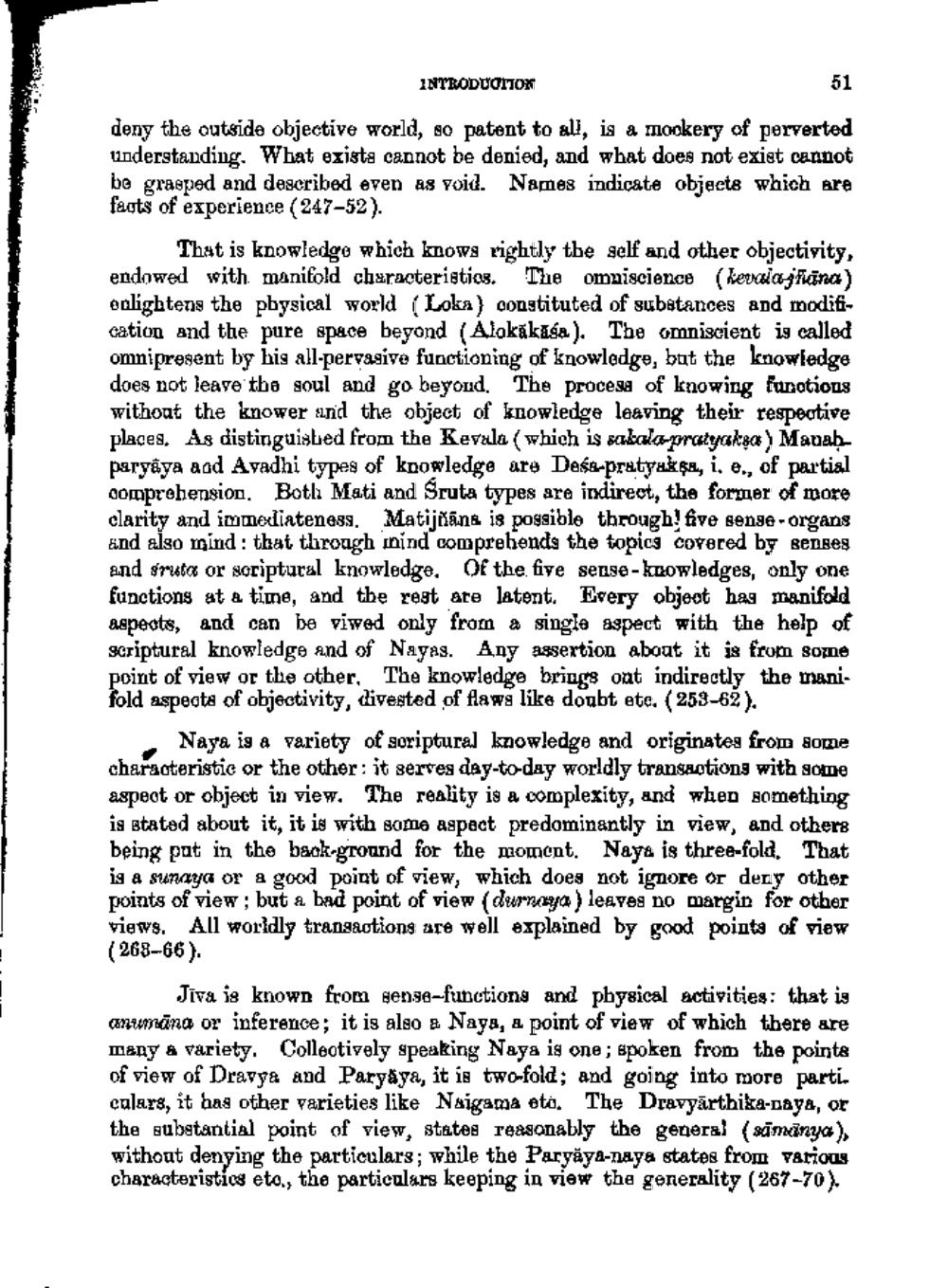________________
INTRODUCITON
51
deny the outside objective world, so patent to all, is a mockery of perverted understanding. What exists cannot be denied, and what does not exist cannot be grasped and described even as void. Names indicate objects which are facts of experience (247-52).
That is knowledgo which knows rightly the self and other objectivity, endowed with manifold characteristios. The omniscience (kevazifikāna) enlightens the pbysical world (Loka) constituted of substances and modification and the pure space beyond (Alokakasa). The omniscient is called omnipresent by his all-pervasive functioning of knowledge, but the knowledge does not leave the soul and go beyond. The process of knowing fanations without the knower and the object of knowledge leaving their respective places. As distinguished from the Kevala ( which is salala-pratyaksa) Madah peryaya and Avadhi types of knowledge are Deśa-pratyašsa, i, e., of partial comprehension. Both Mati and Sruta types are indirect, the former of more clarity and immediateness, Matijdāns is possible through five senge-organs and also yind: that through mịnd comprehends the topics covered by senses and druta or soriptural knowledge. Of the five sense-knowledges, only one functions at a time, and the rest ate latent. Every object hag manifold aspects, and can be viwed only from a single aspect with the help of scriptural knowledge and of Nayag. Any assertion about it is from some
of view or the other. The knowledge brinuts oat indirectly the mani. fold aspects of objectivity, diveșted of flaws like doubt ete. (253-62),
Naya is a variety of soriptural knowledge and originates from some characteristic or the other: it serves day-to-day worldly transactions with gome aspect or object in view. The reality is a complexity, and when something is stated about it, it is with some aspect predominantly in view, and others being put in the bsok-ground for the moment. Naya is three-fold. That is a sunmaya or a good point of view, which does not ignore or deny other points of view; but a bad point of view (durnya) leaves no margin for other views. All worldly transactions are well explained by good points of view (268-66).
Jiva is known from genge-functions and physical activities: that is caramand or inference; it is also a Naya, a point of view of which there are meny a variety. Colleotively speaking Naya is one; spoken from the pointe of view of Dravya and Paryaya, it is two-fold; and going into more parti. culars, it has other varieties like Nsigama eto. The Dravyārthika-baya, or the substantial point of view, states reasonably the general (sīminya), without denying the particulars; while the Paryāya-naya states from various characteristics eto, the particulars keeping in view the generality ( 267-70).




